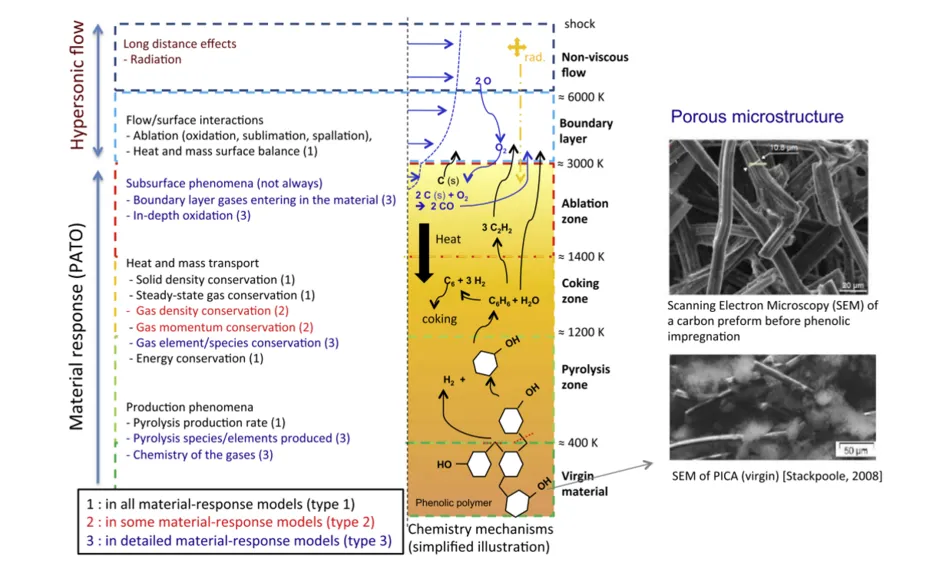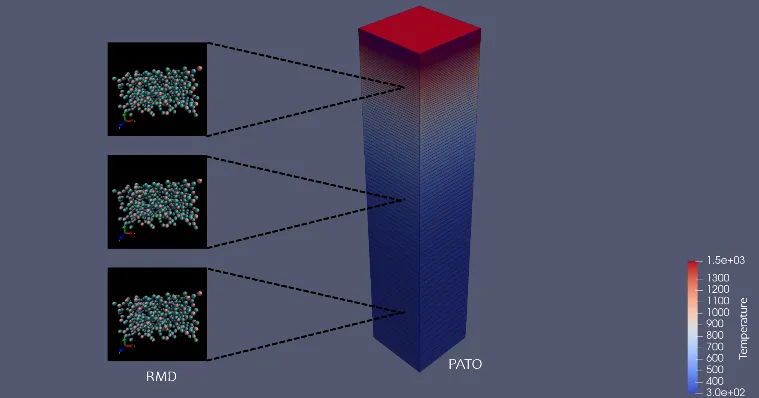Mateusz Hoffert, M.Sc.
Technische Universität München
Lehrstuhl für Thermodynamik (Prof. Wen)
Postadresse
Boltzmannstraße 15
85748 Garching b. München
- Tel.: +49 (89) 289 - 16090
- Raum: 5507.EG.726
- m.hoffert@tum.de
Research project
Multiscale simulation of ablative thermal protection material under hypersonic reentry conditions
The most critical part of a successful space mission is the reentry of spacecrafts into the atmosphere. The hypersonic flow approaching the reentering vehicle undergoes a shock and converts kinetic energy into thermal energy representing an unpleasantly high thermal load on the spacecraft (Yang et al. 2021). One of the most common thermal protection strategies is to cover the exterior spacecraft housing with ablative Thermal Protection Material. In the course of reentry, heat is transferred into the material launching the process of pyrolysis and sublimation as found in the red marked regions of the Space Shuttle Orbiter in Fig 1.


Since experimental studies are costly and reproducing real reentry conditions is difficult, the design process of a spacecraft requires accurate simulations of the material response. There have been many significant research contributions in this regard, most of which, relying on single-scale continuum descriptions of the material. The material response of an ablative TPM, however, is an inherent multi-scale problem. On the microscopic level, the time-dependent composition of the material determines the chemical kinetics. Since ablative TPM usually involve micrometer-sized carbonaceous fiber structures and porosity, mesoscopic scales come into play, too. Computational restrictions necessitate an ultimately macroscopic simulation of the TPM.
My work involves the development of a computational framework coupling multiple scales in the material response of ablative TPMs. For the microscopic scale, Reactive Molecular Dynamics is employed as it is capable of resolving atomistic chemistry. The macroscopic material response is computed by means of PATO (Porous-material Analysis Toolbox based on OpenFOAM), a Finite-Volume solver developed by NASA (Lachaud and Mansour 2014). Different coupling strategies are investigated, incorporation of mesocopic scales is being tackled and time-scale extending techniques, such as adaptive kinetic Monte Carlo are analyzed.

References
Uyanna, Obinna, and Hamidreza Najafi. "Thermal protection systems for space vehicles: A review on technology development, current challenges and future prospects." Acta Astronautica 176 (2020): 341-356.
Yang, Xiaofeng, et al. "Heat transfer with interface effects in high-enthalpy and high-speed flow: Modelling review and recent progress." Applied Thermal Engineering 195 (2021): 116721.
Lachaud, Jean, et al. "Detailed chemical equilibrium model for porous ablative materials." International Journal of Heat and Mass Transfer 90 (2015): 1034-1045.
Lachaud, Jean, and Nagi N. Mansour. "Porous-material analysis toolbox based on OpenFOAM and applications." Journal of Thermophysics and Heat Transfer 28.2 (2014): 191-202.